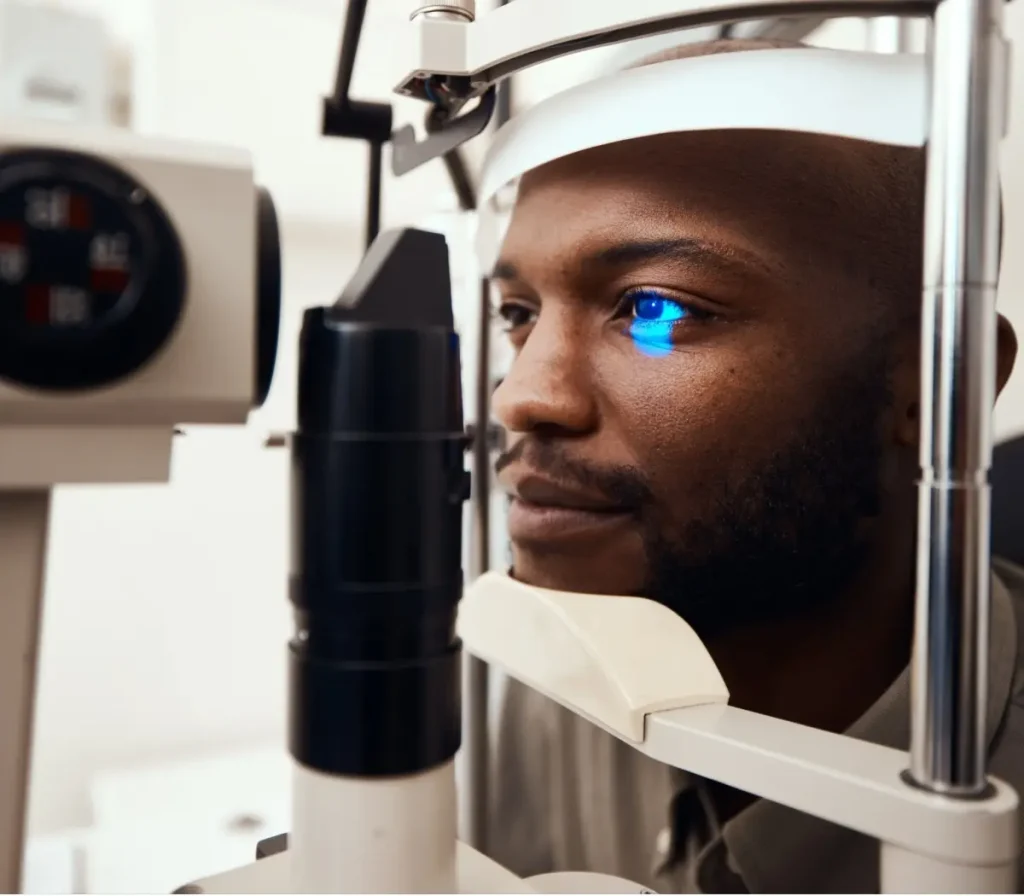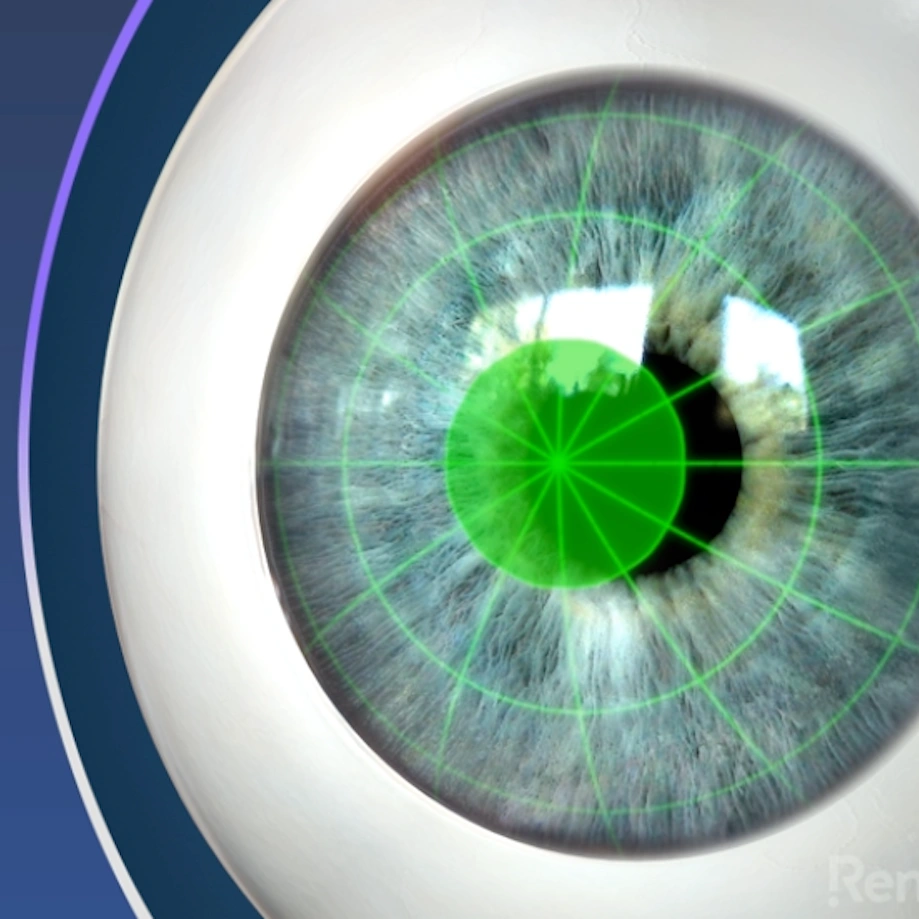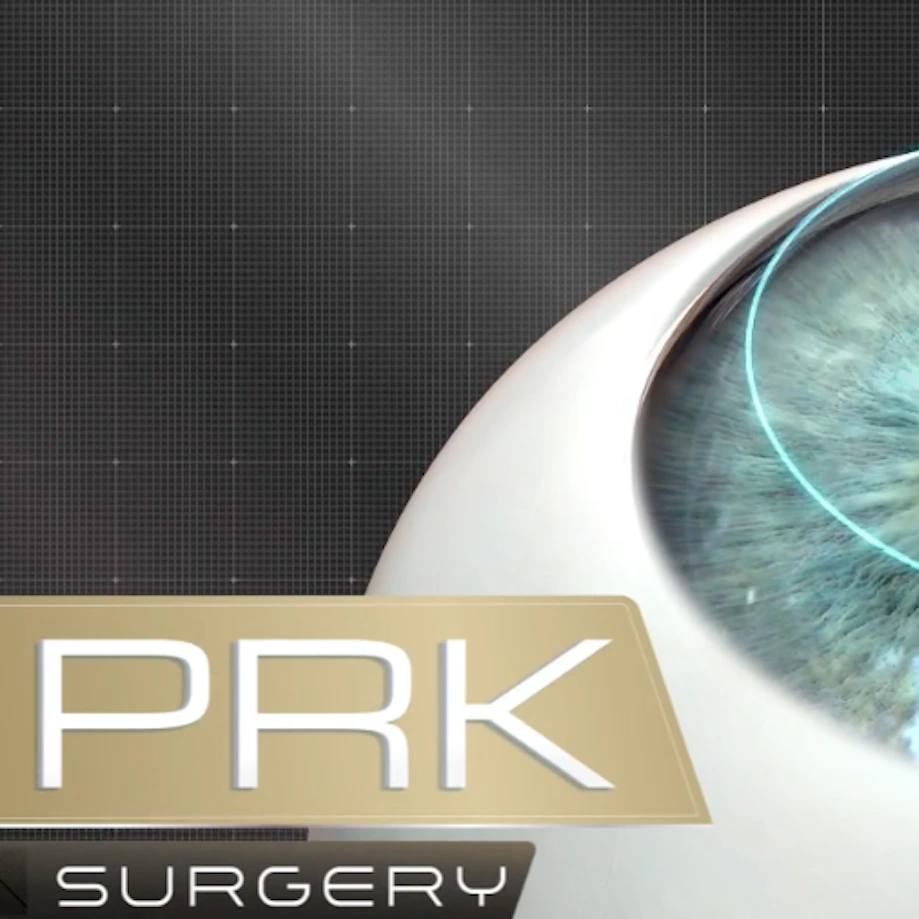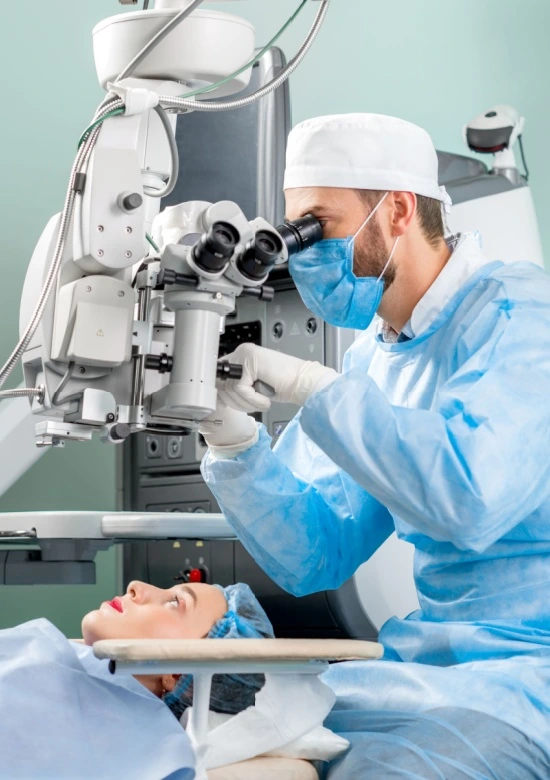
Vision Correction Options
At Columbus Ophthalmology Associates, our experienced ophthalmologists offer a range of vision correction options designed to help our patients enjoy clear vision for life.
Vision Correction Options in Columbus
If you are interested in reducing, or possibly eliminating, your need for glasses or contact lenses, you may be a candidate for refractive surgery that can correct nearsightedness, farsightedness, astigmatism, or presbyopia. The best way to learn which vision correction options may be right for you is to schedule a free consultation.
Related Pages

Custom LASIK
LASIK (laser in-situ keratomileusis) is a popular form of vision correction surgery that reshapes the cornea to reduce refractive errors making you less dependent on glasses or contact lenses.
During Custom LASIK, a laser is used to create the incisions so this is essentially a bladeless procedure. Surgery begins by using the FDA-approved femtosecond laser instead of a microkeratome blade to create a flap with laser energy, allowing exacting customization of the incision. The femtosecond laser is capable of creating extremely precise flaps of uniform thickness by producing tiny bubbles inside the cornea that are 1/10,000 of an inch in diameter. The laser beam cannot penetrate into the eye beyond the cornea, and therefore is extremely safe. After the flap is created, an excimer laser is used to reshape the cornea in order to reduce farsightedness, nearsightedness, or astigmatism. The flap is returned to its original position, and seals itself without
Trusted Source
Lasik
American Academy of Ophthalmology
Go to Source
sutures.
Custom LASIK is performed as an outpatient procedure and takes approximately 10-15 minutes. With the advanced technology that the femtosecond laser provides, some patients who were once considered poor candidates for LASIK due to thin corneas may now be able to undergo this procedure. Furthermore, research has shown that more patients achieve vision that is 20/20 or better with femtosecond custom LASIK as compared to other methods. Therefore, Columbus Ophthalmology Associates only offers their patients the best: bladeless, custom/optimized LASIK with a femtosecond and excimer laser.

PRK
PRK (Photorefractive Keratectomy) is a laser correction surgery very similar to LASIK that is commonly used for patients with less corneal tissue. While LASIK procedures cut a flap in the cornea, PRK removes the outer layer of the cornea (epithelium), and then the same excimer laser used in LASIK sculpts the cornea to correct refractive error.
PRK is considered a safer procedure for patients with thin corneas since more of the cornea is left untouched during surgery. In addition, patients experience less dryness following PRK. However, there is a longer healing period compared to LASIK as the corneal epithelium will take 3-5 days to recover. During that time our patients will wear a soft contact lens that acts as a bandage to minimize pain, promote healing, and protect the cornea. PRK patients usually experience mild to moderate discomfort during the healing process. Blurry vision is common and it may be several weeks before vision is clear and
Trusted Source
What is photorefractive keratectomy (PRK)?
American Academy of Ophthalmology
Go to Source
stable.
However, the long term results are excellent and now allow even more patients to benefit from refractive surgery. Your surgeon will take several in office measurements to choose the right procedure for each individual.

Monovision
Monovision is a refractive surgery technique used for patients with presbyopia. Presbyopia is the loss of ability to focus on objects close up due to the normal aging process, and it will affect most people as they enter their 40s. Many patients are familiar with this technique by using one contact lens for distance and the other for near.
A more permanent method uses refractive surgery to enable one eye to focus for close vision, and the other eye is left untreated, or, if needed, treated to focus for distance vision. While monovision will reduce a patient’s need for glasses or contacts, glasses may still be necessary for fine print.
It is important to discuss your lifestyle with your surgeon prior to making a decision about monovision. It can be difficult for some patients to adjust to monovision. The brain will eventually adjust after six to eight weeks, but that may not be acceptable for some patients. In addition, active individuals who play golf or tennis or drive a great deal at night may not be good candidates for
Trusted Source
What is monovision (or blended vision)?
American Academy of Ophthalmology
Go to Source
monovision.
Which Vision Correction Option is Right for Me?
If you suffer from nearsightedness, farsightedness or astigmatism and want the freedom to live your life without glasses or contacts, you may be a good candidate for refractive surgery. The first step is to schedule an appointment with us. During your consultation, we will discuss your current lifestyle, health history, medications, and post-surgery expectations. After a thorough eye exam and testing, we will confirm whether you are a candidate for refractive surgery and explain the procedure that best fits your needs. We will answer any questions you may have to ensure you are able to make an informed decision.
Don’t wait another day to see how life can look with better vision. Use our easy and flexible online scheduling to book your free consultation with a vision correction expert at Columbus Ophthalmology Associates.
Convenient Locations in and around Columbus
We Look Forward to Seeing You!

5155 Bradenton Avenue
Dublin OH, 43017

5965 E Broad St #480
Columbus OH, 43213

4176 Kelnor Drive
Grove City OH, 43123
Contact Columbus Ophthalmology Associates
1 American Academy of Ophthalmology. Lasik. Available: https://www.aao.org/eye-health/treatments/lasik. Accessed February 17, 2021.
2 American Academy of Ophthalmology. What is photorefractive keratectomy (PRK)? Available: https://www.aao.org/eye-health/treatments/photorefractive-keratectomy-prk. Accessed February 17, 2021.
3 American Academy of Ophthalmology. What is monovision (or blended vision)? Available: https://www.aao.org/eye-health/treatments/what-is-monovision-blended-vision. Accessed February 17, 2021.
The doctors at Columbus Ophthalmology Associates have either authored or reviewed the content on this site.












